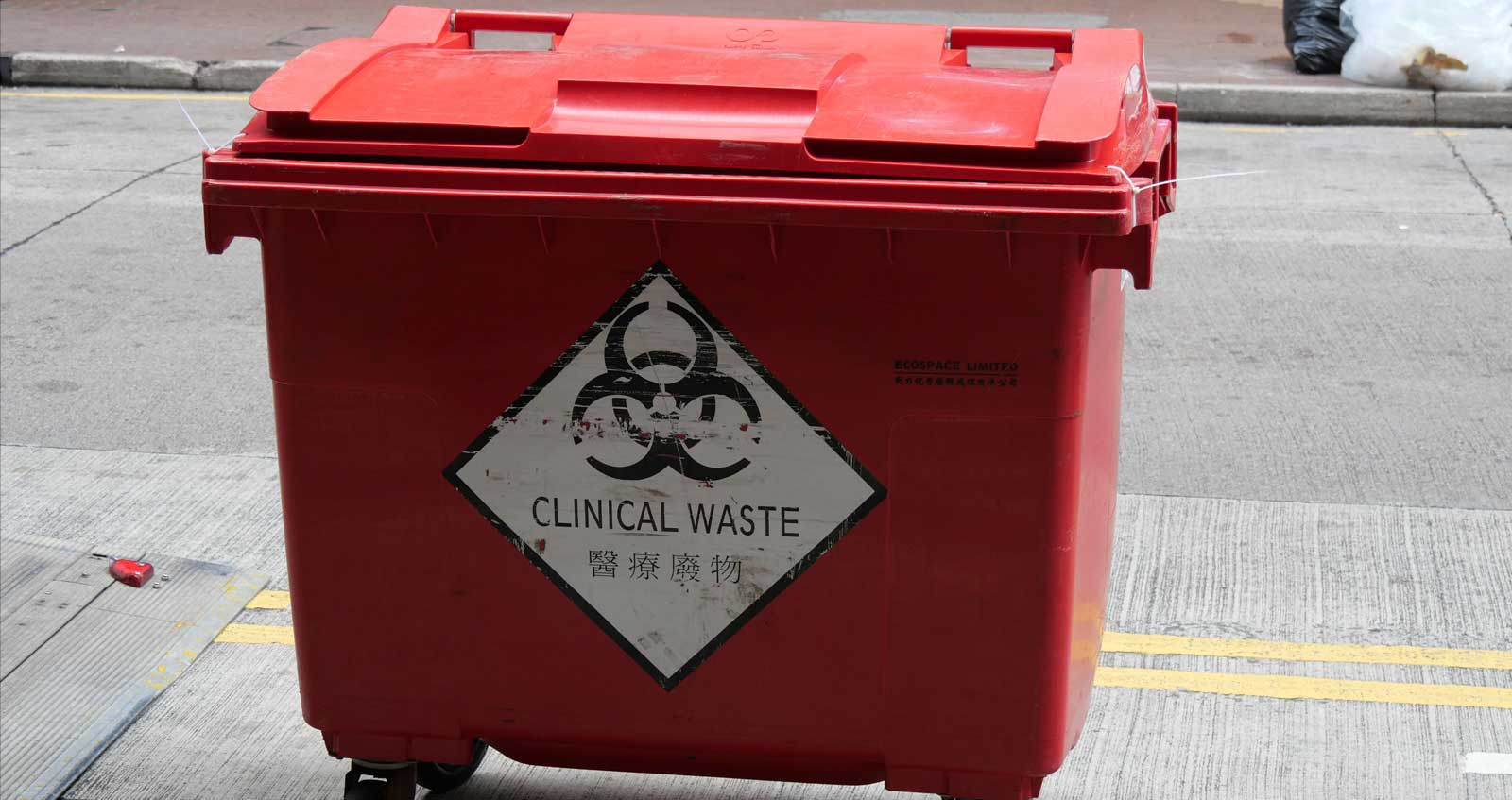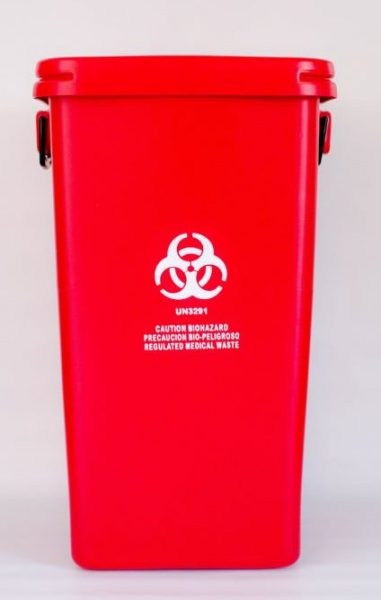Medical Waste Removal Proficiency: Where Service Quality Fulfills Wellness Specifications
Reliable and Eco Friendly Medical Garbage Disposal Solutions
In the ever-evolving field of medical care, the issue of medical garbage disposal continues to be a subject of critical importance. As healthcare facilities, clinics, and other medical care facilities aim to offer high quality patient treatment, they must additionally address the difficulty of effectively and properly getting rid of their waste - medical waste removal service. In a period where ecological sustainability goes to the leading edge of public consciousness, locating solutions that are both environmentally pleasant and effective is not only an issue of compliance yet likewise a testament to the dedication of health care institutions in the direction of a greener future. From waste segregation techniques to cutting-edge reusing efforts, this discussion will certainly explore the different strategies employed to tackle this pressing concern, leaving you fascinated and anxious to check out the prospective solutions that lie ahead.
Waste Segregation Practices
Reliable waste partition practices are necessary to make certain the safe and appropriate disposal of medical waste. Clinical waste, which includes materials contaminated with possibly transmittable materials, must be managed in a method that lessens the threat of injury to both public wellness and the setting. Proper waste segregation plays an important function in accomplishing this objective.
Waste partition entails the splitting up of various sorts of waste based upon their characteristics and potential risks. This procedure ensures that each sort of waste is treated and taken care of properly (medical waste disposal services with WasteX). It begins at the point of generation, where health care facilities should have marked containers and containers for various waste classifications, such as sharps, transmittable waste, pharmaceutical waste, and non-hazardous waste
By setting apart medical waste at the resource, doctor can protect against cross-contamination and minimize the danger of exposure to contagious agents. This technique also facilitates the recycling and recuperation of certain products. Setting apart and reusing clean plastics and glass lowers the demand for raw products and decreases the environmental effect of clinical waste disposal.

Autoclaving and Sanitation Strategies
In order to guarantee the correct and risk-free disposal of medical waste complying with reliable waste partition techniques, health care centers must employ autoclaving and sterilization techniques. Autoclaving is a commonly utilized approach that utilizes high-pressure steam to sanitize medical waste. This procedure entails putting the waste in a chamber and subjecting it to a mix of high temperature and pressure, which effectively kills microorganisms and provides the waste risk-free for disposal. Autoclaving is particularly effective in sterilizing items such as medical instruments, research laboratory equipment, and specific types of medical waste that can withstand heats. medical waste disposal services with WasteX.
This entails dealing with the waste with chemicals such as ethylene oxide or hydrogen peroxide, which kill microbes by interrupting their cellular framework. It is crucial to keep in mind that chemical sterilization needs correct handling and disposal of the chemicals utilized, as they can be hazardous to human health and the environment if not managed correctly.
On-Site Waste Therapy Systems
Healthcare facilities have implemented on-site waste treatment systems to attend to the disposal of medical waste in a efficient and safe manner. These systems offer a hassle-free and cost-effective solution for taking care of clinical waste produced within the facility. On-site waste treatment systems utilize numerous modern technologies to deal with and dispose of clinical waste on-site, decreasing the demand for transportation to off-site centers.
One frequently utilized on-site waste treatment system is the microwave technology. This modern technology makes use of microwave power to decontaminate and decontaminate medical waste, decreasing its quantity and making it risk-free for disposal. An additional system is the chemical sanitation technology, which involves dealing with medical waste with chemicals to eliminate virus and lower its harmful nature. This method is particularly efficient for liquid medical waste.
On-site waste treatment systems use numerous advantages. They eliminate the threat of medical waste being mishandled during transport, reducing the potential for contamination and exposure to dangerous materials. In addition, these systems help healthcare facilities adhere to waste administration guidelines by giving a effective and practical disposal technique. Additionally, on-site treatment systems reduce the general environmental effect of medical waste by minimizing transport and the need for landfill space.
Recycling and Repurposing Efforts
As medical care facilities pursue sustainable waste management practices, they are increasingly exploring recycling and repurposing efforts as a way of decreasing the environmental impact of clinical waste. Reusing and repurposing initiatives entail finding innovative ways to reuse or change medical waste right into new products or materials. This not just assists to reduce the volume of waste that winds up in burners or garbage dumps however likewise minimizes the usage of raw materials and energy needed for producing new items.
One instance of recycling in the health care field is the reprocessing of single-use medical devices. This not just reduces the quantity of waste created however likewise saves medical care facilities considerable prices associated with buying new gadgets.
An additional recycling effort entails the recycling of plastic containers, such as medication bottles or syringe housings. These containers can be collected, sorted, and sent out to reusing facilities where they are processed, melted down, and transformed right into brand-new plastic products. This helps to conserve sources and reduce the need for virgin plastic manufacturing.
Along with recycling, repurposing campaigns entail finding different uses for medical waste. Shredded paper waste from clinical documents or product packaging materials can be repurposed as bedding material for animals or as insulation material. redirected here In a similar way, a fantastic read natural waste such as food scraps from healthcare facilities can be composted and utilized as plant food in yards or farming areas.

Renewable Power Solutions
One reliable strategy to mitigating the ecological influence of health care procedures entails applying eco-friendly power options. Health care centers, such as hospitals and clinics, consume significant quantities of power for numerous functions, consisting of illumination, home heating, cooling, and running clinical tools. By transitioning to renewable resource sources, these facilities can substantially lower their carbon footprint and contribute to a more lasting future.

Executing renewable resource options in medical care facilities not only minimizes greenhouse gas exhausts yet likewise uses lasting cost savings. While the initial investment in sustainable power framework might be greater, the long-term operational expenses of renewable resource systems are significantly reduced contrasted to typical fossil fuel-based energy sources. Furthermore, renewable resource systems are reliable and can offer a steady and uninterrupted power supply, guaranteeing constant health care services even during power failures or emergencies.
Verdict
In verdict, carrying out efficient and ecologically friendly clinical waste disposal solutions is essential for preserving a sustainable healthcare system. By adopting waste partition techniques, autoclaving and sterilization methods, on-site waste treatment systems, reusing and repurposing campaigns, and renewable energy solutions, medical care centers can considerably decrease their environmental influence.
It begins at the point of generation, where healthcare facilities need to have designated bins and containers for different waste classifications, such as sharps, transmittable waste, see this page pharmaceutical waste, and non-hazardous waste.
In order to guarantee the correct and secure disposal of medical waste complying with efficient waste partition practices, health care facilities must use autoclaving and sanitation methods.Healthcare centers have executed on-site waste therapy systems to resolve the disposal of medical waste in a secure and reliable manner. On-site waste treatment systems use different technologies to get rid of and treat of clinical waste on-site, lessening the requirement for transport to off-site facilities.
As medical care facilities strive for sustainable waste monitoring methods, they are progressively checking out recycling and repurposing initiatives as a way of decreasing the ecological impact of medical waste. - medical waste removal service